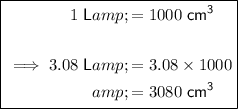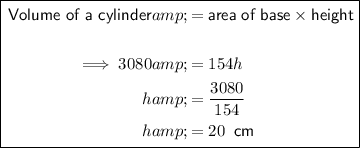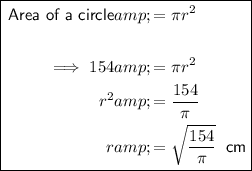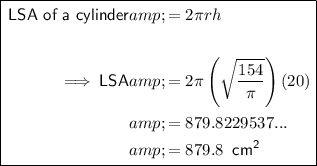Answer:
879.8 cm² (nearest tenth)
Explanation:
Given:
- Volume = 3.08 L
- Area of base = 154 cm²
Convert the given volume to cubic centimeters:

Substitute the volume and base area into the formula for the volume of a cylinder and solve for height, h:

The base of a cylinder is a circle.
Substitute the given area of the base into the formula for the area of a circle and solve for radius, r:

The curved surface area of a cylinder is called the Lateral Surface Area (LSA).
Substitute the found radius and height into the formula for LSA of a cylinder:
